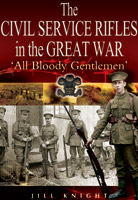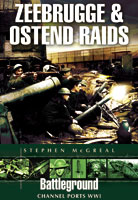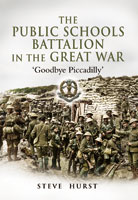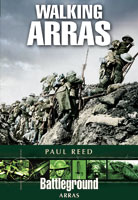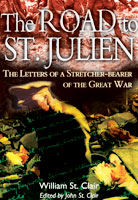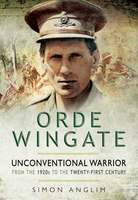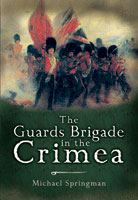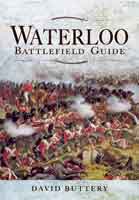The Civil Service Rifles in the Great War (Hardback)
Imprint: Pen & Sword Military
Pages: 224
ISBN: 9781844150571
Published: 1st October 2004
Last Released: 1st August 2007
(click here for international delivery rates)
Order within the next 6 hours, 22 minutes to get your order processed the next working day!
Need a currency converter? Check XE.com for live rates
Civil servants are not generally known for their soldierly qualities. Yet in the Great War a volunteer regiment of 'civil servants and their friends' served with distinction in the front line, fighting in many of the major battles. This new study, the first since the 1920s, draws on previously unpublished material - personal memoirs, diaries and interviews - to tell their extraordinary story, and is supported by a wealth of marvellous photographs.
The Civil Service is not strong on remembering its own history. How many of us, serving or retired, know about our Regiment’s part in the Great War? Until I read this book, despite 35 years in the Service and an active interest in military history, I thought that the Rifles were created in 1914 to encourage civil servants to enlist and that they formed a single battalion of the London Regiment. I was wrong on both counts – as this excellent book, written in 2004 by Jill Knight of the FCO and DTI, has shown me.
Christopher Jary for Civil Service World
The Civil Service Rifles were not creatures of Kitchener’s or Derby’s recruitment appeals. They were a London Volunteer unit that traced its origins to the mid-19th Century – and beyond – and that drew its part-time recruits from young men in the public service. The Rifles sent 136 soldiers to fight the Boers in South Africa and some Boer War veterans also fought in the First World War. Such was the flood of new recruits in August 1914 that the Regiment formed a 2nd Battalion. A 3rd Battalion followed but did not go overseas; its role was to supply trained men for the two fighting battalions. The 1st Battalion went to France in March 1915 and fought at Festubert, Loos, Vimy Ridge, the Somme, Messines, Cambrai, the retreat of March and April 1918 and the advances from August 1918 until the Armistice. To their chagrin, the 2nd Battalion stayed in England until April 1916. They even wrote a song about it:
We’ve been to Dorking, Watford, Ware,
Old Saffron Walden, we’ve been there,
One of these days, so please the Lord,
If we’re in luck, we’ll go abroad,
But, after an uneventful spell in Ireland following the Easter Rising, they caught up with their foreign travel. Three months on Vimy Ridge between June and October 1916 were followed by six months fighting Bulgarians in Salonika and a year fighting Turks in Egypt and Palestine, capturing and defending Jerusalem, before returning to France to take part in the final advances of 1918. Jill’s very human account tells the whole story, often most touchingly and lucidly in the Riflemen’s own well-chosen words.
Now seems a good moment to consider their story because a century ago two battalions of Civil Service Riflemen were serving in the trenches. Next Friday we will remember the Somme Offensive, which began on 1st July and ground to its murderous, muddy halt on 18th November 1916. A million men were killed or wounded in one of the bloodiest battles in the history of war. A turning point in modern history, this was the beginning of modern, industrialised, total war. Battle was no longer a clash between regular armies reinforced by volunteers; it was now a grinding campaign of attrition between the industrial muscle and manpower of two groups of nations. After the Somme Great Britain changed socially, politically and spiritually. A proud, confident nation now bore a painful scar.
Given the disparity between the popular stereotypes of civil servants and soldiers, would you expect a regiment of faceless bureaucrats to be outstanding? Well, they were. The Rifles won 27 battle honours, 329 gallantry awards and 116 mentions in Despatches. So good were they that 967 of their men – 14% of those sent overseas – were commissioned. Educated men – hence the title – they excelled as soldiers. From the outset: Many … were work colleagues and friends; a lot had attended the same schools; and a number were related, either directly or by marriage. These relationships crossed all ranks and there was no deep divide between officers and men. Later, a Regular Commanding Officer tried unsuccessfully to introduce pre-war Regular Army relationships into the 2nd Battalion. There was general relief when… he was succeeded by an informal, cheery young Regular Captain on promotion… Overnight friendly officer-man relations were restored, without detriment to military discipline. One veteran remembered: He realised very early the type of men of whom the Battalion was composed, and was content to lead and guide rather than to drive. Destructive criticism had no place in his armoury.
Much of their leadership was home-grown. The last Commanding Officer of the 2nd Battalion was Lieutenant-Colonel Augustus Benké, a Home Office official who joined the Rifles in 1910. After service in France with the 1st Battalion, he fought with the 2nd in Salonika and Egypt and rose to command the Battalion in the last months of the war. After the war he was appointed OBE for his service as a prison governor, adding the decoration to the DSO, MC and mention in Despatches he had received during a dazzling career as an infantry officer. That leadership permeated all ranks. Take Sergeant-Major F C Robertson of the 1st Battalion (once Board of Education), who won a DCM, or Corporal Francis Martin of the same Battalion, previously a local government official in Reading and later commissioned into another Regiment. These were typical of the men of all ranks who together created the Regiment’s unique culture. Siegfried Sassoon saw the reinforcements arriving before the Somme as drafts of volunteers and afterwards as droves of victims. Impressively, despite heavy casualties and huge numbers of reinforcements – most of whom were not civil servants – the Rifles maintained their own character and discipline to the end. Reinforcements were absorbed but in turn themselves subtly absorbed the brave and democratic spirit created by the early volunteers.
On a terrace on the embankment side of Somerset House stands a column. Designed by Sir Edwin Lutyens, it commemorates 1240 Civil Service Riflemen killed in the First World War. Next time we’re near the Strand, let’s pop along and spend a minute – or perhaps two – thinking about these predecessors of ours who confronted the horrors of world war and did their duty. And, while we’re there, we can also remember Jill Knight who, having told their remarkable story, died much too young.
The Civil Service is not strong on remembering its own history. How many of us, serving or retired, know about our Regiment’s part in the Great War? Until I read this book, despite 35 years in the Service and an active interest in military history, I thought that the Rifles were created in 1914 to encourage civil servants to enlist and that they formed a single battalion of the London Regiment. I was wrong on both counts – as this excellent book, written in 2004 by Jill Knight of the FCO and DTI, has shown me.
Civil Service World
The Civil Service Rifles were not creatures of Kitchener’s or Derby’s recruitment appeals. They were a London Volunteer unit that traced its origins to the mid-19th Century – and beyond – and that drew its part-time recruits from young men in the public service. The Rifles sent 136 soldiers to fight the Boers in South Africa and some Boer War veterans also fought in the First World War. Such was the flood of new recruits in August 1914 that the Regiment formed a 2nd Battalion. A 3rd Battalion followed but did not go overseas; its role was to supply trained men for the two fighting battalions. The 1st Battalion went to France in March 1915 and fought at Festubert, Loos, Vimy Ridge, the Somme, Messines, Cambrai, the retreat of March and April 1918 and the advances from August 1918 until the Armistice. To their chagrin, the 2nd Battalion stayed in England until April 1916. They even wrote a song about it:
We’ve been to Dorking, Watford, Ware,
Old Saffron Walden, we’ve been there,
One of these days, so please the Lord,
If we’re in luck, we’ll go abroad,
But, after an uneventful spell in Ireland following the Easter Rising, they caught up with their foreign travel. Three months on Vimy Ridge between June and October 1916 were followed by six months fighting Bulgarians in Salonika and a year fighting Turks in Egypt and Palestine, capturing and defending Jerusalem, before returning to France to take part in the final advances of 1918. Jill’s very human account tells the whole story, often most touchingly and lucidly in the Riflemen’s own well-chosen words.
Now seems a good moment to consider their story because a century ago two battalions of Civil Service Riflemen were serving in the trenches. Next Friday we will remember the Somme Offensive, which began on 1st July and ground to its murderous, muddy halt on 18th November 1916. A million men were killed or wounded in one of the bloodiest battles in the history of war. A turning point in modern history, this was the beginning of modern, industrialised, total war. Battle was no longer a clash between regular armies reinforced by volunteers; it was now a grinding campaign of attrition between the industrial muscle and manpower of two groups of nations. After the Somme Great Britain changed socially, politically and spiritually. A proud, confident nation now bore a painful scar.
Given the disparity between the popular stereotypes of civil servants and soldiers, would you expect a regiment of faceless bureaucrats to be outstanding? Well, they were. The Rifles won 27 battle honours, 329 gallantry awards and 116 mentions in Despatches. So good were they that 967 of their men – 14% of those sent overseas – were commissioned. Educated men – hence the title – they excelled as soldiers. From the outset: Many … were work colleagues and friends; a lot had attended the same schools; and a number were related, either directly or by marriage. These relationships crossed all ranks and there was no deep divide between officers and men. Later, a Regular Commanding Officer tried unsuccessfully to introduce pre-war Regular Army relationships into the 2nd Battalion. There was general relief when… he was succeeded by an informal, cheery young Regular Captain on promotion… Overnight friendly officer-man relations were restored, without detriment to military discipline. One veteran remembered: He realised very early the type of men of whom the Battalion was composed, and was content to lead and guide rather than to drive. Destructive criticism had no place in his armoury.
Much of their leadership was home-grown. The last Commanding Officer of the 2nd Battalion was Lieutenant-Colonel Augustus Benké, a Home Office official who joined the Rifles in 1910. After service in France with the 1st Battalion, he fought with the 2nd in Salonika and Egypt and rose to command the Battalion in the last months of the war. After the war he was appointed OBE for his service as a prison governor, adding the decoration to the DSO, MC and mention in Despatches he had received during a dazzling career as an infantry officer. That leadership permeated all ranks. Take Sergeant-Major F C Robertson of the 1st Battalion (once Board of Education), who won a DCM, or Corporal Francis Martin of the same Battalion, previously a local government official in Reading and later commissioned into another Regiment. These were typical of the men of all ranks who together created the Regiment’s unique culture. Siegfried Sassoon saw the reinforcements arriving before the Somme as drafts of volunteers and afterwards as droves of victims. Impressively, despite heavy casualties and huge numbers of reinforcements – most of whom were not civil servants – the Rifles maintained their own character and discipline to the end. Reinforcements were absorbed but in turn themselves subtly absorbed the brave and democratic spirit created by the early volunteers.
On a terrace on the embankment side of Somerset House stands a column. Designed by Sir Edwin Lutyens, it commemorates 1240 Civil Service Riflemen killed in the First World War. Next time we’re near the Strand, let’s pop along and spend a minute – or perhaps two – thinking about these predecessors of ours who confronted the horrors of world war and did their duty. And, while we’re there, we can also remember Jill Knight who, having told their remarkable story, died much too young.
Christopher Jary








